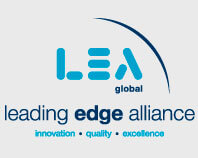As the COVID-19 pandemic continues to dissipate, it’s important for construction companies to implement a proactive and aggressive approach to managing their risk. To protect their overall well-being, business owners must consider whether the vendors and subcontractors they’re working with are able to maintain their position financially, especially as projects and workloads ramp up.
If you haven’t already done so, your leadership executives need to put together a risk management team to help ensure your strategic planning. This team should consist of both management and risk management personnel, especially employees from operations, financial and legal departments. Representatives of your projects need to provide status updates to this team, including labor and subcontractor problems, potential changes, claims, project estimates and schedule changes. These issues and financial concerns should be regularly discussed in meetings.
Outside of meetings, accounting needs to remain on top of their accounts to be able to provide up-to-date information in a timely manner. External advisors must also keep your company updated on legal, tax and financial implications, especially as you consider contractual obligations or business model changes. Of particular importance is job costing data for accounting, including supplier price increases, costs pertaining to COVID-19, additional project costs, as well as scheduling and delay costs that can result in future claims. This allows accounting to create projections and cash flow forecasts to measure against actual figures, making it easier to monitor financial standing. There are a wide range of available tools to help you project cash flow, forecast deficits, take care of shortfalls, check working capital and determine liquidity.
Evaluating Existing Contract Risk
Risk management should be a component of each project, which should be separated based on financial viability. Projects that are struggling should have alternative consideration, including financial guarantees from owners and assistance with periodic payments for subcontractors and vendors who are having problems.
You should examine which contracts may necessitate changes and prioritize those that will work collaboratively rather than cause problems. Plan to quickly address options with your stakeholders, focusing significant resources on protecting your company’s legal rights so that you can comply with contractual obligations with those who will cause problems.
If you foresee any continued COVID-19 shutdowns or delays, we also recommend speaking with your legal advisor to decide whether you need to give written notice to the project. Make sure that if you do have to shut down that the site is secured. Asset management software with Bluetooth or RFID technology can help track your inventory and prevent potential product or equipment theft, damage or loss.
Evaluating New and Potential Contract Risks
Estimating projects requires risk evaluation. Most construction companies focus on building their backlog while bidding on more jobs than they normally would. However, you need to provide reasonable proposals, as extremely low proposals on a high-risk project may cost your company everything.
Develop a project rating system using factors such as your required minimum profit and if you have the capacity and skills in your crew to take on the project. Consider the timeframe, bonding requirements and type of work, then prioritize the projects that can provide your company with the best profit margin. Carefully consider the materials needed to ensure they’ll be available either currently or when needed, so that supply chain disruptions won’t impact your work as readily.
Evaluating Subcontractors
It’s necessary to subcontract work in many projects, but it also expands your risk. When working with subcontractors, consider requiring more frequent financial statements, monitoring liquidity and leveraging ratios and changes in their surety ability, WIP and manpower. Companies relying on credit lines and banks have a higher level of risk due to the stricter credit market.
To help you vet your subcontractors properly and minimize your risk exposure from them, keep in mind that there are a range of prequalification forms that you can find online to use with your subcontractors.
Insurance Considerations
With the delays and shutdowns caused by the pandemic and the lasting impacts it has had on the industry, adding profit and business interruption insurance is a great option to consider. COVID-19-related insurance can cover a variety of issues, including environmental, subcontractor default, worker’s compensation and management liability. Diversifying your suppliers may also help you manage risk.
Remember that it’s important to keep in touch with your insurance company to get details on policy extensions, delayed or shutdown project insurance price quotes and updates on potential coverage and eligibility issues. This also makes it easier to stay on top of rate increases and restrictions on coverage.
We’re Here to Help
If you have any questions on how your construction company can stay on top of risk management, please contact Scott Hazy or Aaron Scale by calling 770.396.2200.





